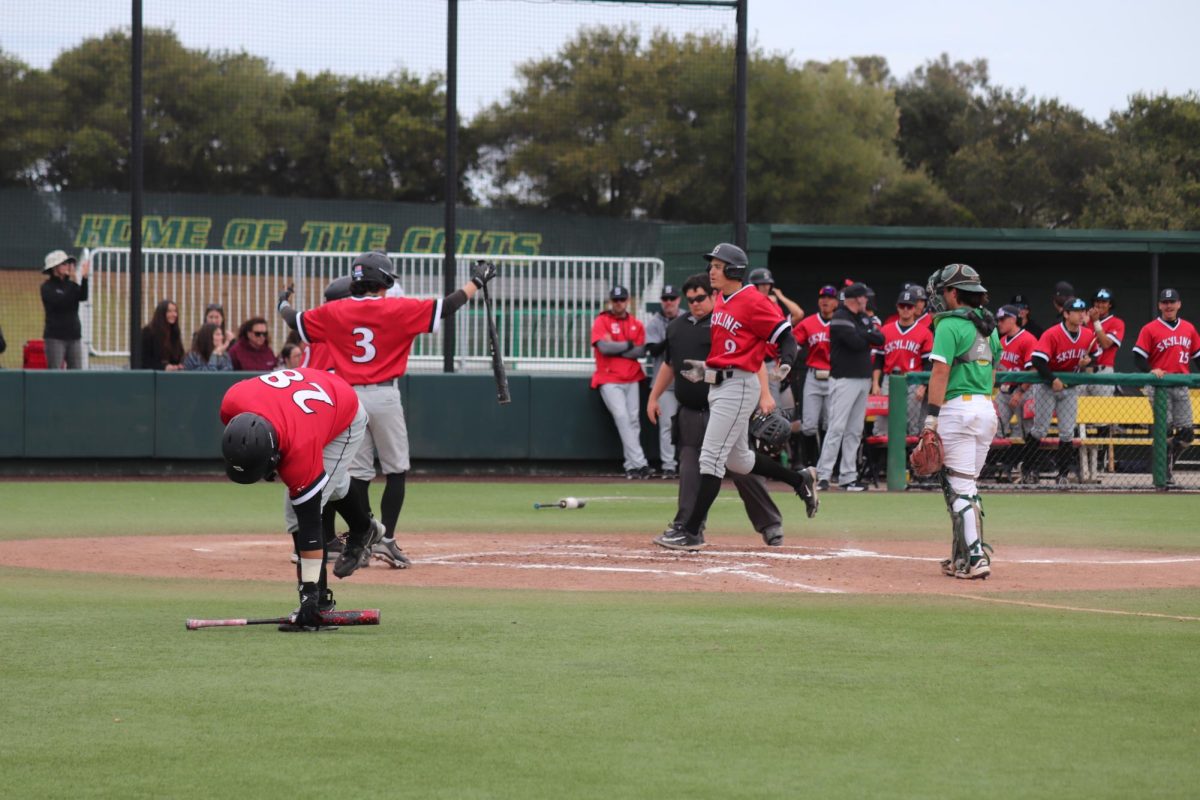Blair Hardee: Tell me a little about the badminton program.
Jan Fosberg: Skyline is in its 11th year of badminton. We’ve had five Conference Championship teams, and the same five teams finished second in the State Team Championships. We’ve also had two individual State Champions in singles from Skyline.
(Editor’s note: Badminton has two championships per season. The first is a team competition, in which the winners from Northern and Southern California play each other, and the second is an individual championship, in which the top six doubles teams and the top eight singles players from each conference play each other.)
BH: How many players do you have, and what kind of commitment are players making when they sign up for the team?
JF: We currently have six players but are still holding tryouts. We generally can carry as many players as want to play. Players commit to daily practices and twice-weekly matches while attending school full-time.
BH: Which other teams do you play?
JF: Our conference consists of [City College of San Francisco], De Anza, Mission and Fresno City Colleges.
BH: Why does the season start later than the other spring sports at Skyline?
JF: Our season begins later because we have a small conference and don’t want a long period of no competition between the end of conference and post-season play. Our governing body, the CCCAA, determines when post-season is played.
BH: Tell me about the structure of your season.
JF: We begin with a conference pre-season tournament. The five teams that are in our conference make up all of the community colleges in Northern California, so we generally don’t have any other pre-season matches. For conference, we play everyone twice–home and away. Matches consist of 21 points. Once a team wins 11 points, they win the match.
(Editor’s note: Winners in a singles match earn one point for their team, and doubles winners earn two with the exception of number 3 doubles, who earns one.)
Post-season works as follows: the conference team champion (the team with the most team wins) plays the Southern California Champion for the State Championship. On the individual side, players must qualify to play in the State Championship. We hold “Conference Finals” the first week of May, in which any singles or doubles players may enter. A bracket is drawn up, ranking players by their records in the regular season, and played out until only the top eight singles players and top six doubles teams are left. This is a single elimination tournament. Those top finishers are then entered into a seeded bracket to play the following week for the State Championship.
BH: Are there any promising freshmen you expect to excel this season?
JF: It’s a bit early in the season for me to predict this, and all of our ring before next sememster could be impacted by these changes.
There’s no telling what the future holds for our athletic program and the future of affordable higher education in general, but the state government is clearly making strides to save money in any way possible. The reduction in funding is problematic today, but some cutbacks are imperative on the way to economic recovery.
Summaries of these proposals can be found at www.lao.ca.gov, under the “Products” tab.
This graph shows the percentage of total fees for which students are responsible, and illustrates the proposed increase for next year.freshmen are working hard to be the best they can be, but if I had to guess I’d say Gimen Lau will be a tough singles player. We’re still determining who will pair up in doubles.
BH: Do you have any returning players this season? How do you feel these “veterans” could help the team this season?
JF: We have two returners this season: Adriane Tomimbang, who played last year, and Kaide Leviste, who returns after a year off. We look to the returners to be role models for the freshmen, to be leaders on the court, and of course to build on the skills they gained in their first season of competition. The level of play at the college level is far above what many freshmen saw in high school so it’s invaluable to the newer athletes to have the returners to “show them the ropes”.









